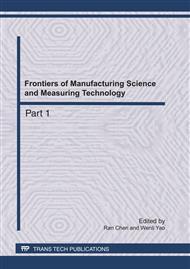p.877
p.884
p.888
p.892
p.896
p.900
p.905
p.910
p.916
Solid-Phase Extraction of Hg (II) by a Porous Nano-Barium-Strontium Titanate Microspheres from Blood and Urine Samples
Abstract:
A new system for determination of trace mercury based on separation and preconcentration with porous nano-barium-strontium titanate microspheres (PBSTM) prior to its determination by a hydride generation-atomic absorption spectrometry (HG-AAS) was propounded. The optimum experimental parameters for preconcentration of mercury, such as pH of the sample, contact time, sample volume, eluent and interfering ions, have been studied. The result showed that mercury could be quantitatively retained by PBSTM in the pH range of 4-8, the shaking time was 10 min, and the amount adsorbed was 12.2 mg·g-1. The mercury adsorbed on the sorbent could be eluated completely with 2 mol·L-1 HNO3. The detection limit of this method for mercury was 6.3 ng·L-1 with an enrichment factor of 60. The method has been applied for the determination of trace amounts of mercury in whole blood and urine with satisfactory results.
Info:
Periodical:
Pages:
896-899
Citation:
Online since:
May 2011
Authors:
Price:
Сopyright:
© 2011 Trans Tech Publications Ltd. All Rights Reserved
Share:
Citation:


